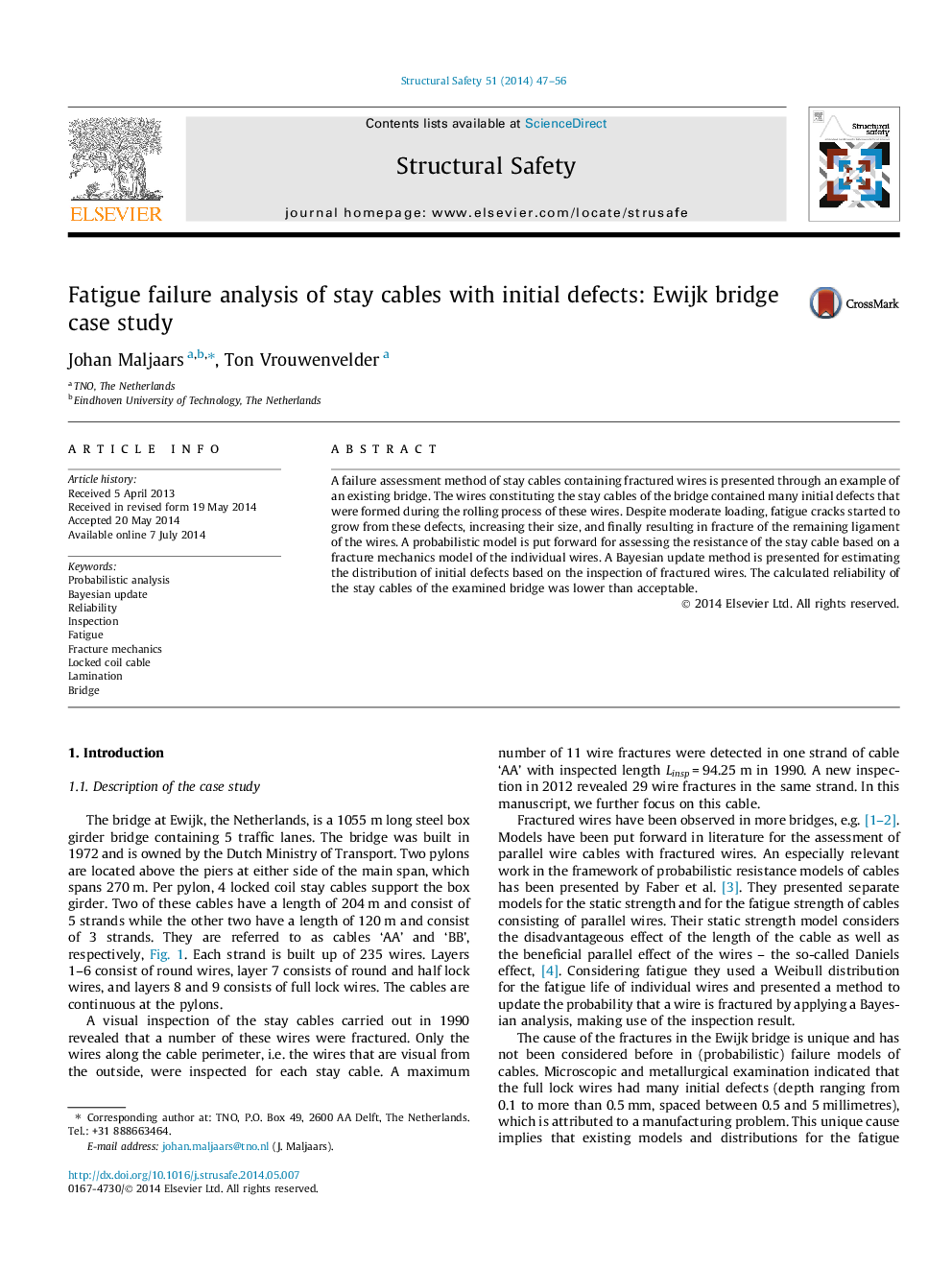| کد مقاله | کد نشریه | سال انتشار | مقاله انگلیسی | نسخه تمام متن |
|---|---|---|---|---|
| 307531 | 513373 | 2014 | 10 صفحه PDF | دانلود رایگان |

• The Ewijk bridge stay cables contain initial defects caused by the rolling process.
• Fracture mechanics is used to determine crack growth and fracture of wires.
• Initial defect sizes are based on a Bayesian update procedure.
• The assessment gives a failure probability that cannot be accepted.
• Other cables constructed around 1970 may have similar problems.
A failure assessment method of stay cables containing fractured wires is presented through an example of an existing bridge. The wires constituting the stay cables of the bridge contained many initial defects that were formed during the rolling process of these wires. Despite moderate loading, fatigue cracks started to grow from these defects, increasing their size, and finally resulting in fracture of the remaining ligament of the wires. A probabilistic model is put forward for assessing the resistance of the stay cable based on a fracture mechanics model of the individual wires. A Bayesian update method is presented for estimating the distribution of initial defects based on the inspection of fractured wires. The calculated reliability of the stay cables of the examined bridge was lower than acceptable.
Journal: Structural Safety - Volume 51, November 2014, Pages 47–56